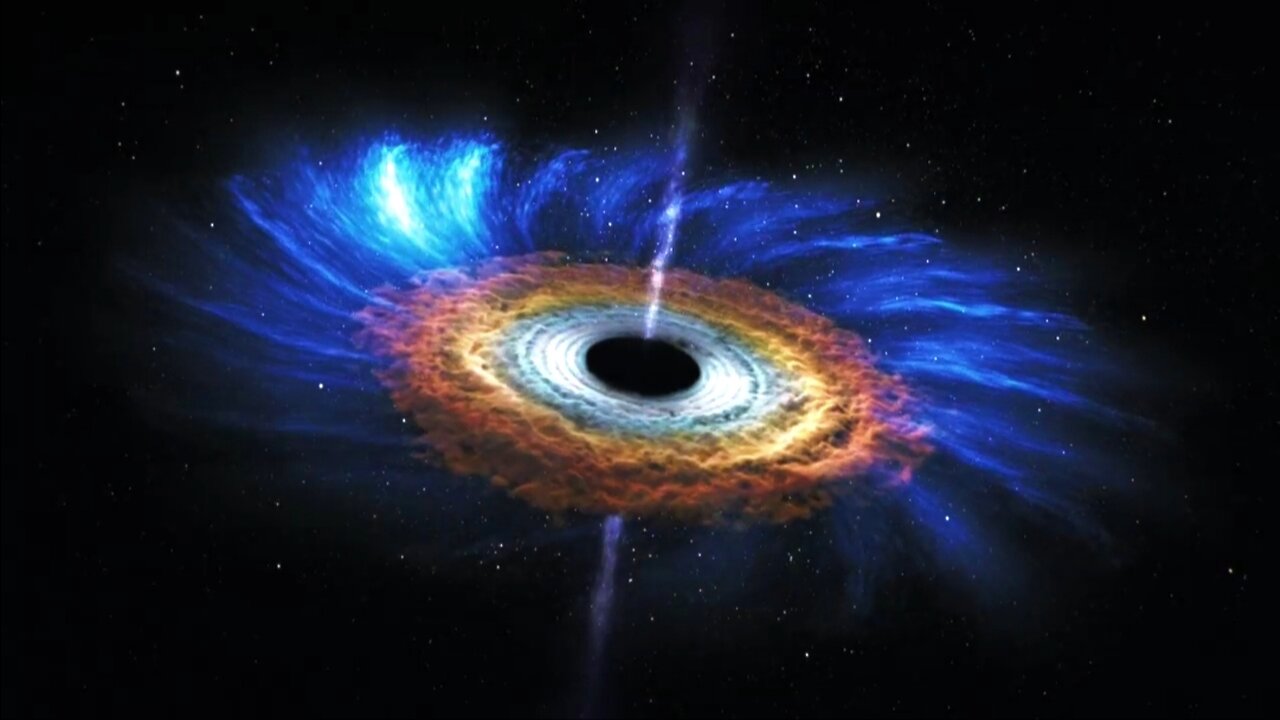Premium Only Content

NASA | Massive Black Hole Shreds Passing Star | SpaceX
This artist's rendering illustrates new findings about
a star shredded by a black hole. When a star
wanders too close to a black hole, intense tidal
forces rip the star apart. In these events, called “tidal
disruptions," some of the stellar debris is flung
outward at high speed while the rest falls toward
the black hole. This causes a distinct X-ray flare that
can last for a few years. NASA's Chandra X-ray
Observatory, Swift Gamma-ray Burst Explorer, and
ESA/NASA's XMM-Newton collected different pieces
of this astronomical puzzle in a tidal disruption
event called ASASSN-14li, which was found in an
optical search by the All-Sky Automated Survey for
Supernovae (ASAS-SN) in November 2014. The
event occurred near a supermassive black hole
estimated to weigh a few million times the mass of
the sun in the center of PGC 043234, a galaxy that
lies about 290 million light-years away. Astronomers
hope to find more events like ASASSN-14li to test
theoretical models about how black holes affect
their environments.
During the tidal disruption event, filaments
containing much of the star's mass fall toward the
black hole. Eventually these gaseous filaments
merge into a smooth, hot disk glowing brightly in
X-rays. As the disk forms, its central region heats up
tremendously, which drives a flow of material, called
a wind, away from the disk.
Music credit: Encompass by Mark Petrie from Killer
Tracks.
-
 1:49:30
1:49:30
Nick Freitas
13 hours agoHere's Why The Housing Market Is Permanently Broken
5.4K -
 17:03
17:03
Nicholas Bowling
17 hours ago $0.32 earned"Celebrity" Tells Street Preacher His Dad's in the ILLUMINATI
3.01K1 -
 LIVE
LIVE
BEK TV
20 hours agoTrent Loos in the Morning - 7/30/2025
219 watching -
 4:10
4:10
Blackstone Griddles
12 hours agoCajun Dogs with Bruce Mitchell
3.9K1 -
 29:38
29:38
Uncommon Sense In Current Times
14 hours ago $0.20 earnedIs Doubt a Sin? Wrestling with Faith & Belief (Part 1) | Dr. Randal Rauser
10K4 -
 8:29
8:29
The Art of Improvement
20 hours ago $0.14 earned4 Strategies To Accelerate Your Personal Growth By 200%
3.72K1 -
 LIVE
LIVE
The Bubba Army
21 hours agoTrump Pardoning Diddy? - Bubba the Love Sponge® Show | 7/30/25
2,493 watching -
 10:53
10:53
Nikko Ortiz
1 day agoWORST Clips On The Internet
63.5K22 -
 27:44
27:44
DeVory Darkins
16 hours ago $6.31 earnedCHILLING update regarding NYC shooter Lefties LOSING IT over Sydney Sweeney
18.3K84 -
 10:05
10:05
MattMorseTV
15 hours ago $11.81 earnedHe actually did it...
81.4K39